When it comes to inspecting a hunter’s bag of ducks, there is invariably some discussion around identifying grey ducks as distinct from hen mallards.
What's in the Bag?
While every hunter can identify the greenheads, separating the grey ducks from the hen mallards can be a bit trickier. In most areas the majority of ducks shot display a combination of appearances. This is most likely due to the high level of hybridisation (interbreeding) between the two species. In the field, Fish & Game staff differentiate them according to which species a duck displays the strongest characteristics of. Apart from overall appearance, where greys are slightly smaller and have a darker plumage, there are several other main characteristics that we look at:
Grey Duck |
Mallard Hen |
|
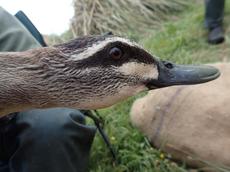 |
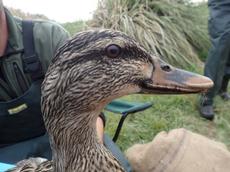 |
|
| Grey ducks have a pale head with a conspicuous dark facial stripe and grey bill. | Vs | Mallard hens have a more mottled face and an orange bill with a black saddle. |
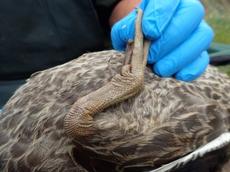 |
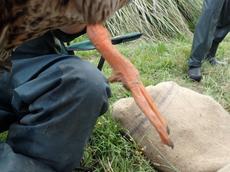 |
|
| Grey ducks have olive legs and feet. | Vs | Mallards have orange legs and feet. |
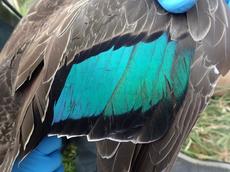 |
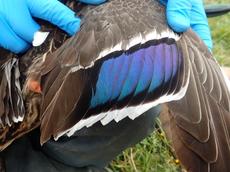 |
|
| Grey ducks have a green speculum with black borders and a thin white band on the trailing edge only. | Vs | Mallards have a blue speculum bordered with thin black and broader white bands front and back. |
Hybrid 1 (Grey-like) |
Hybrid 2 (Mallard-like) |
|
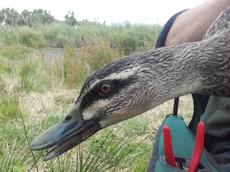 |
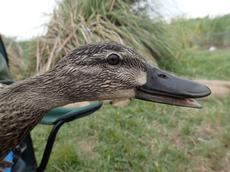 |
|
| Head slightly mottled but conspicuous dark facial stripe. Olive/grey bill. More grey-like. | Vs | Head mottled and no facial stripe. Olive bill. More mallard-like. |
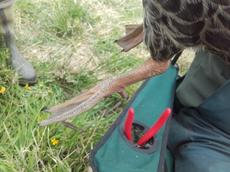 |
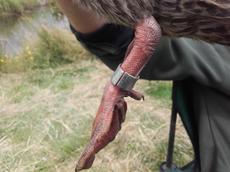 |
|
| Legs and feet more olive than orange. Slightly more grey-like. | Vs | Legs and feet more orange than olive. More mallard-like. |
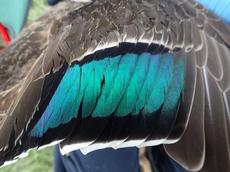 |
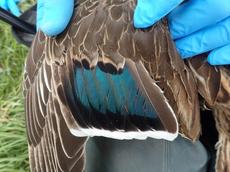 |
|
| Wings have a greenish speculum with black borders and a thin white bands on both edges. More grey-like. | Vs | Wings have a bluish speculum with black borders and broad white band on back edge only. Slightly more mallard-like. |
While this assessment is not absolutely definitive in terms of identifying genetic heritage, it is accurate enough to be useful for generally separating grey ducks from the hen mallards.